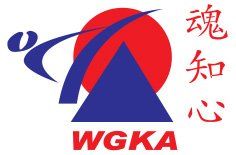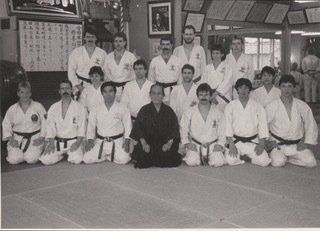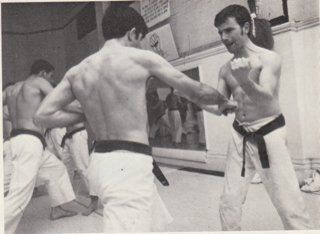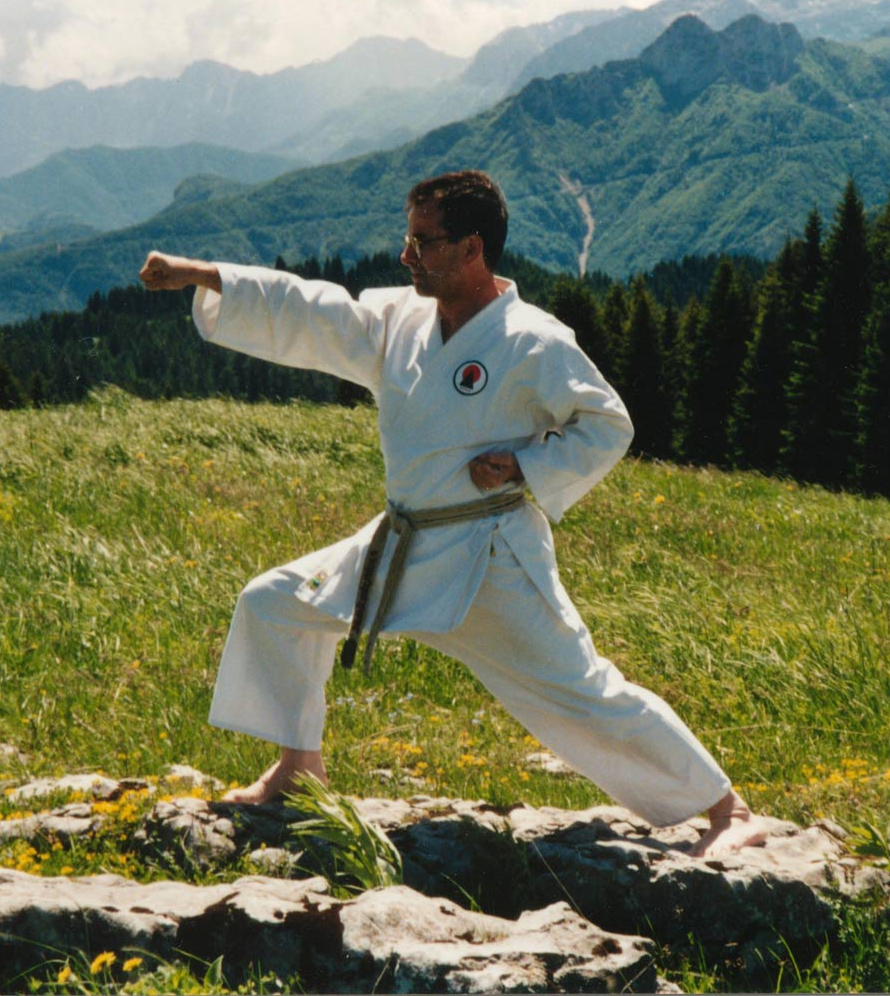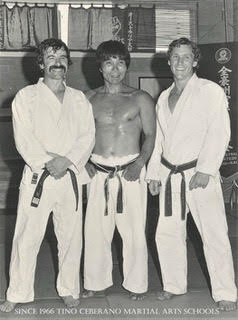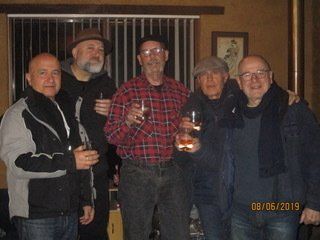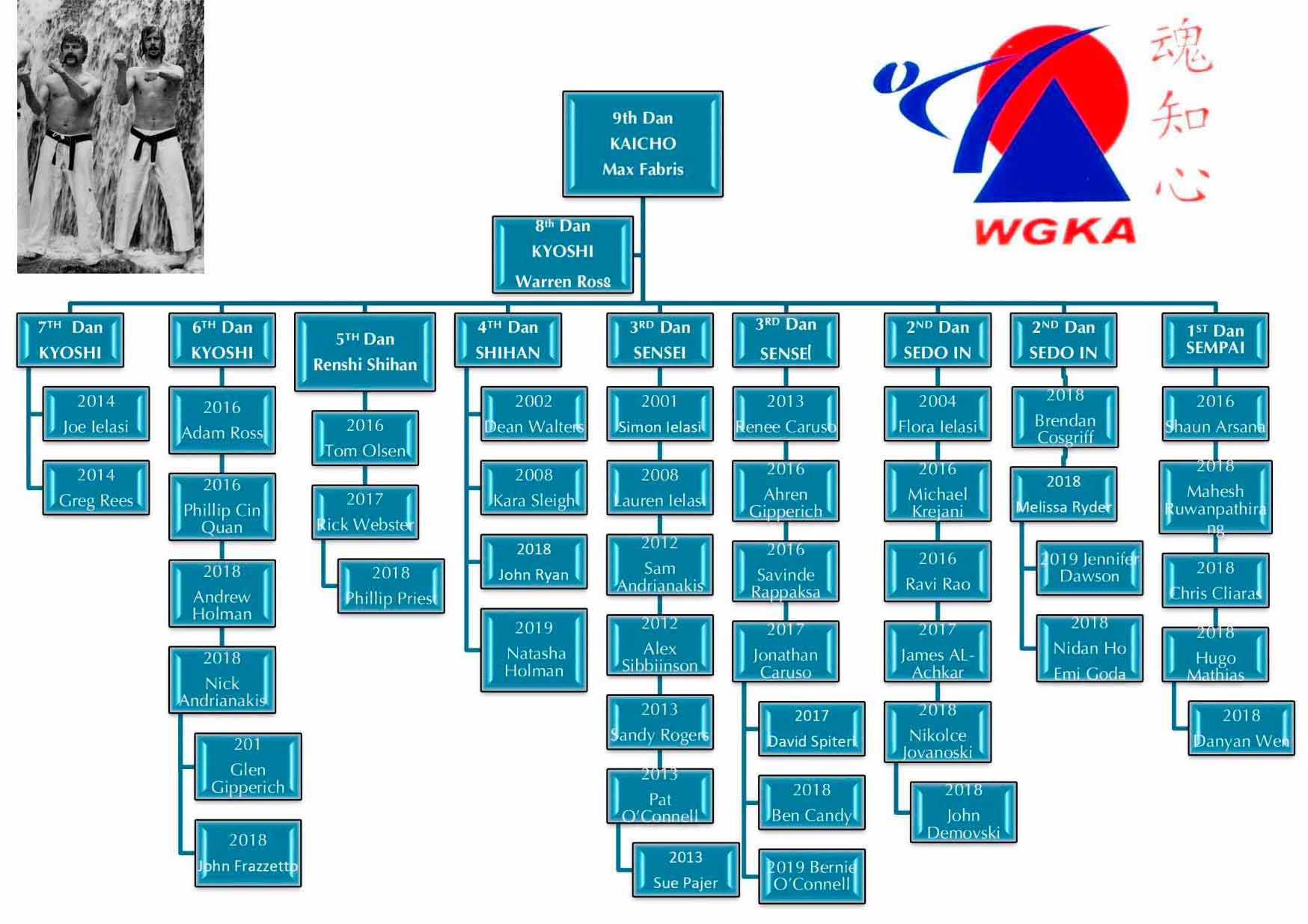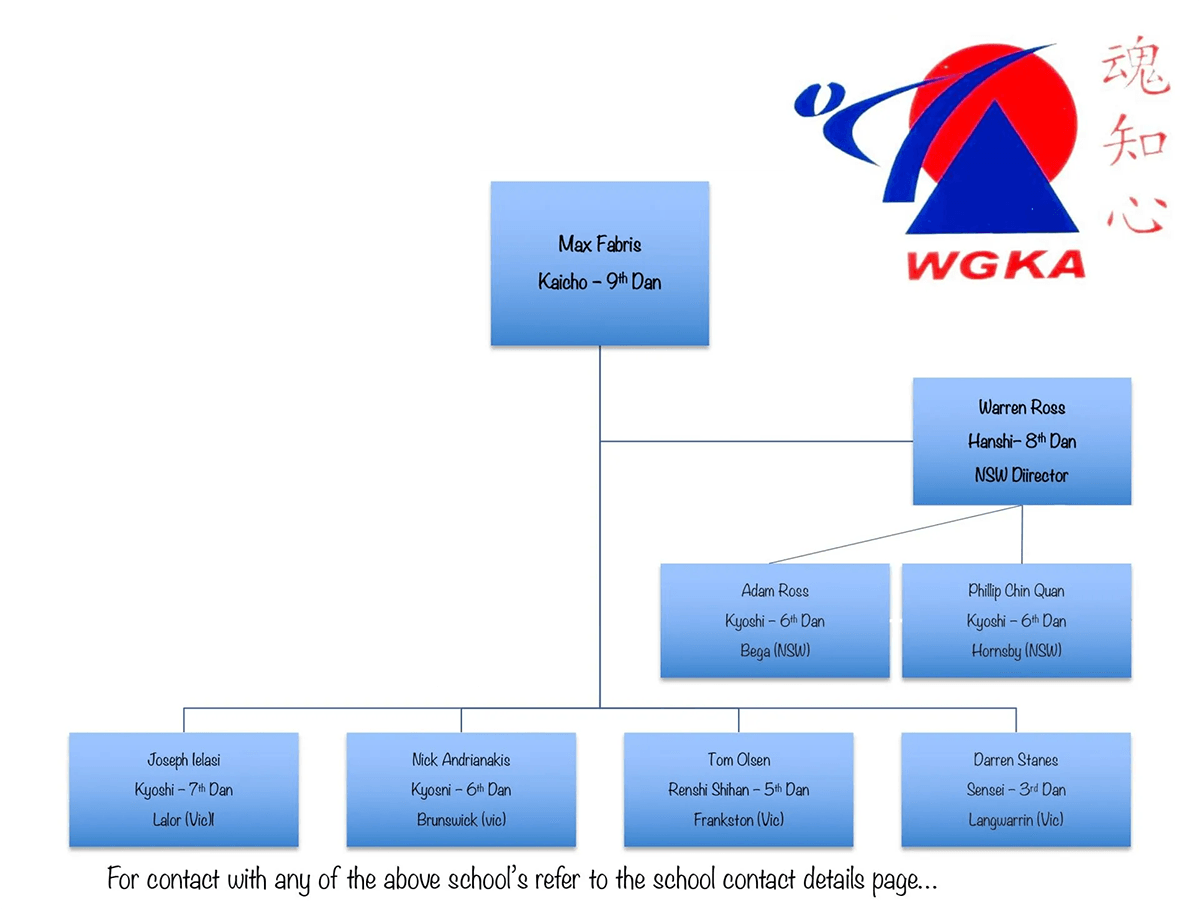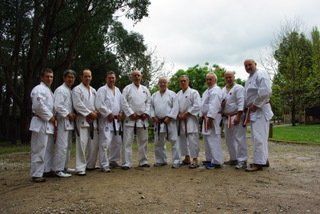World Goju Ryu Karate-Do Academy
(WGKA)
World Goju Ryu
Karate-Do Academy
(WGKA)
Birth Of Yongchun White Crane Gongfu 1674
In the early Qing dynasty, as the shaolin temple was believed to have been a sanctuary for resistance fighters, government forces burned the place down in 1674.
Among the monks that fled the monastery was Fang Zhonggong a master of monk fist boxing from the rural village of Yongchun, Fujian province. A group of scoundrels from a neighbouring village, who were trying to gain control of the village of Yongchun, deceived Fang and then beat him up. He consequently fell ill and eventually died. His daughter, Fang Qiniang who had been trained by her father in monk fist boxing was very troubled by her father’s death and vowed to take revenge.
One day after the tragedy she saw two cranes fighting outside her home. She noticed how these two cranes strategically manoeuvered themselves away from each other's fierce attacks with remarkable precision. In an attempt to shoo the cranes away she went outside and with a long bamboo pole she attempted to swing or poke but before the pole reached the intended target the cranes evaded every attempt and then flew away.
After considerable time and study, Fang finally came to understand the central principals of hard and soft (and yielding) to power. After 3 years of relentless training, Fang’s innovative style became one of the most popular self-defence systems in the Fujian province. The system was in fact a fusion of Monk Fist Gong Fu and Fang Qiniang’s interpretation of the white cranes instinctive defensive movements. She believed that it is only through discovering and mastering the world within that the power of positive human force can be developed in harmony with nature and used to defeat any adversary. Yongchun White Crane Gong Fu is born.
Crane Boxing Introduced to Okinawa in 1826
Zeng Cishu who Fang defeated in battle became her student and eventually the 1st successor or 2nd
Generation master of White Crane Gong Fu. Through relentless practice of Happoren Quan, he developed his inner strength so that it eventually manifested through his 36 vital points. He made Happoren Quan a popular tradition which was perpetuated and handed down. Thus to develop inner strength through the Quan.
- Eliminate external distractions and concentrate only upon intention
- Coordinate breathing and synchronise it with the muscular activity. When you extend your arm, exhale and strike but conserve 50% of your air. Be sure never to expel all of your air at one time. When you inhale, your body becomes light. When you exhale, your body becomes rooted
- Listen to your breathing and become aware of every part of your body
- There must be a constant but pliable muscular contraction in the deltoid, trapezius, latissimus dorsi, serratus and pectoral muscle groups
- To encourage perfect diaphragm breathing, the spine must be parallel to the stomach
- Techniques are executed forward and back from where the elbows meets the waist
To understand the physical and metaphysical precepts of hard and soft (‘gaugrou' in Mandarin, ‘goju’ in Japanese) one must learn that it is the even balance between the two that enables one to overcome the greatest adversary of all: oneself. Hardness represents both the material force of the human body and one’s fierceness. Softness represents the gentleness of one’s character and the resilience to yield in the face of adversity.
- One of Zeng Cishu’s many students was Teng Shan Wang Foudeng, who became the second successor and the one responsible for perpetuating the tradition in the following years.
- Lin Shixian a master of White Crane Gong Fu from Yongchun village taught Pan Yuba.
- Pan Yuba taught Ryuru Ko (Xie Zhingxiang).
- Ryuru Ko developed his own hybrid form of Crane Boxing called Minghe Quan or Whooping Crane Gong Fu (also referred to as singing or crying crane Gong Fu) the style emphasised palm techniques, the 72 Shaolin Seizing techniques, striking the 36 vital points, the use of Qi energy and body movement. He taught Higashionna Kanryu.
Higashionna Kanryu Okinawan after living in Fuzhou for nearly a decade came to learn the central elements of several kinds of Chinese Gong Fu. From this hybrid of Whooping crane Gong Fu and other, Crane Boxing was introduced to Okinawa in 1828 and served as the basis from which Goju Ryu was born.
Birth of Goju Ryu 21 November 1930
Chojun Miyagi was accepted as a student of Karyu Higaona in 1902. Higashionna Kanryu taught Miyagi Chojun and Go Kenki (Wu Xiangui). Sometime after 1920 Go Kenki accompanied Miyagi on 2nd visit to China. In 1926 Chojun Miyagi established the Karate Kenkyu club with a bank loan guaranteed by his friend Go Kenki. The objective of the club was to ensure the preservation of Karate as an Okinawan cultural treasure for all time. The Shihans were Chojun Miyagi Chief Instructor Chomo Hanashiro, Choyu Motubu und Kenwa Mabuni.
From time to time Miyagi invited his friend Go Kenki to demonstrate his art of white crane. Sometimes Miyagi and Go Kenki also played Chonji (the game of go). Go Kenki did not teach at the club but according to Uechi Kanbun, he had a major influence upon Miyagi Chojun, Mabuni Kenwa, Kyoda Juhatsu and Matayoshi Shinho. Go Kenki had a few students that he taught from his home. His teaching and training included the following:
In celebration of Crown Prince Hirohito's succession to the throne, Chojun Miyagi, sent his top student Jin An Shinzato to perform at the All Japan Martial Arts Demonstration held at the Meiji Shrine Tokyo on 5/5/1930. After Shinzato performed Sanchin and Seisan Katas, one of the other demonstrators asked the name of his style. Shinzato relayed this information to Chojun Sensei and as a result Miyagi named his style Goju in line with the 8 Kenpo Haku (martial arts poems) - the way of inhaling and exhaling is hardness and softness. Thus Chojun Miyagi’s Goju Ryu was the first Karate style to be officially named and registered. The Okinawa Kenritsu Taiiki Kyokai (Okinawa Prefectural Athletic Association), was established with Karate as part of its syllabus. Thus on 21 November 1930 Goju Ryu is officially born,
What is Goju Ryu
From a historical view point, Goju Ryu is a hybrid of Monk Fist Boxing and Whooping Crane Boxing with other Chinese Gong Fu and other Crane Boxing blended into the mix. The main features of the style are as follows:
From Monk Fist Boxing;
- Hard Style techniques with simple geometrical principles of movement
- Defensive and offensive techniques that can be used in linear and circular pattern
- Employs the principles of Hard & Soft evasive and resilient, aggressive offense.
- Linear attacks are neutralised from an angle, while angular attacks are repelled in a straight line.
From Whooping Crane Boxing;
- Palm techniques; 72 Shaolin seizing techniques, striking 36 vital points. Qi Energy, Body Movement.
- Evasive style, inner force, encounter force with pliability and vice versa, all body movement including stealth and evasive maneuvering, must be governed by correct breathing.
- Body must be resilient - posture gives with force and when force is gone, posture resumes.
- When body stretched up and inhales, there is no resistance (spiraling), when a stable posture is assumed and air is forced out while contracting the muscles, one becomes immovable.
Sources:
1. Bubishi-Patrick McCarthy
2. The Essence of Naha-Te - Joe Swift
3. The history of Karate - Morio Higadonna
4. Okinawa's complete karate system (Isshin Ryu) - Michael Rosenbaum
5. Okinawa Goju Ryu - Morio Higadonna
Max Fabris, 9th DAN
Founder & Chief Instructor of the WGKA Goju Ryu Organisation
The Origins
In the 1800's Japanese warriors invading the island of Okinawa kept the inhabitants who were not allowed to bear arms, oppressed and peasant like. In these times Chinese merchants travelling to the islands took with them a martial art they called "Chinese Hand " or ''To-De" which to the locals later became "Karate- Empty Hand".
An enthusiastic Okinawan youngster by the name of Chojun Miyagi became skilled in the art and in 1915 determined to find out more travelled to China to study the martial arts. His search led him to the hard school of Shaolin Chuan, the soft school of Pakua Chuan and from these two he developed his own style of Goju, hard and soft. He believed that both the hard and soft complement each other and thus created Tensho Kata exercise the variant of the Southern Chinese Ku Fu form Rokkishu.
Birth of WGKA
After the end of the Second World War as international peace developed, international relations and trade also increased and with this so too did travel and communication. In this climate many of the previously kept secret Japanese Martial Arts were gradually passed on to the Western World.
Max Fabris, a student of Goju Ryu since the late 196O's , developed a very keen competitive spirit winning seven consecutive state Kata titles, three Australian titles, top placing in Asia and the world and achieving many Kumite accolades' and placing in many open championships. From competition it was only natural that he should turn to coaching. As the state and national coach, Max Fabris prepared many competitors to a "Top l0" position in the world ranking.
This competitive and coaching insight soon became the driving force for his vision of the ideal Karate organisation and so in 1993 he founded the World Goju Ryu Karate-Do Academy (W.G.K.A).
Today WGKA an organisation with many students, many highly qualified instructors and dojos in Victoria and New South Wales, continues to be headed by its founder and Chief Instructor Max Fabris, 9th Dan Kaicho.
WGKA's mission is to provide a blend of tradition and sport to train the human body in the skills of Goju Ryu Karate and then adapting these athletic skills to develop good character. To balance physical and mental development, students are encouraged to study the history and culture of Karate-Do. For this reason WGKA has adopted as its motto: Sharing Knowledge, Gaining Strength.
School Contact Details
NSW:
Sydney: Hornsby - Philip Chin Quan
Mob: 0403 821 022
E-mail: philip@hornsbykarate.com
Bega: Adam Ross
Mob: 0409 413 242
E-mail: adamrosskarate@gmail.com
Victoria:
Lalor: Joseph lelasi
Ph: (03) 9464 6202
Mob: 0408 345 467
E-mail: wgka@martialhouse.com.au
Brunswick: Nick Andrianakis
Mob: 0418 568 760
E-mail: nicosandrianakis@gmail.com
Web: www.wgka.org
Frankston: Tom Olsen
Mob: 0497 392 101
E-mail: wgkapeninsula@hotmail.com
Langwarrin: Darren Stanes
Mob: 0490 916 566
E-mail: wgka-langwarrin@hotmail.com
Affiliated with
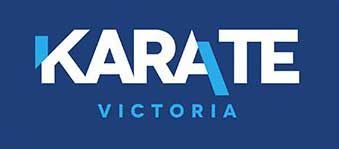
WGKA Goju Karate
Martial House
12 B May Rd, Lalor, VIC 3075
WGKA Goju Karate
Martial House
12 B May Rd, Lalor, VIC 3075











